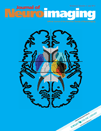Sterile Brain Abscess due to Juvenile Xanthogranuloma:DWI Characteristics
J Neuroimaging 2013;23:437-440.
ABSTRACT
Juvenile xanthogranuloma (JXG) is a disorder of non-Langerhans cell histiocytosis that usually displays as a self-limiting course in children. Rare systemic involvement implies poor prognosis. Although conventional and spectroscopic magnetic resonance imaging (MRI) findings of JXG in CNS have been described, diffusion imaging of intracranial JXG has not been reported. Our case report is the first manuscript to describe diffusion restriction of a cerebral lesion seen in the setting of JXG. Since diffusion restriction has not been described in the setting of JXG but it is more commonly associated with infectious cerebral abscess, this finding has had significant impact in the management. Central nervous system (CNS) lesion of our patient has also had additional imaging features similar to typical infectious cerebral abscess. Extensive work-up has been unrevealing any infectious source. Patient has had biopsy proven peripheral sterile abscesses. After extensive discussion with the family, brain biopsy is deferred. Intravenous steroid therapy is initiated in intensive care setting. All of the lesions have gradually responded to steroid therapy. CNS lesion has taken the longest time to clear.




